Original WWII August 1943 USS Sproston (DD-577) Pacific & European Theater War Report
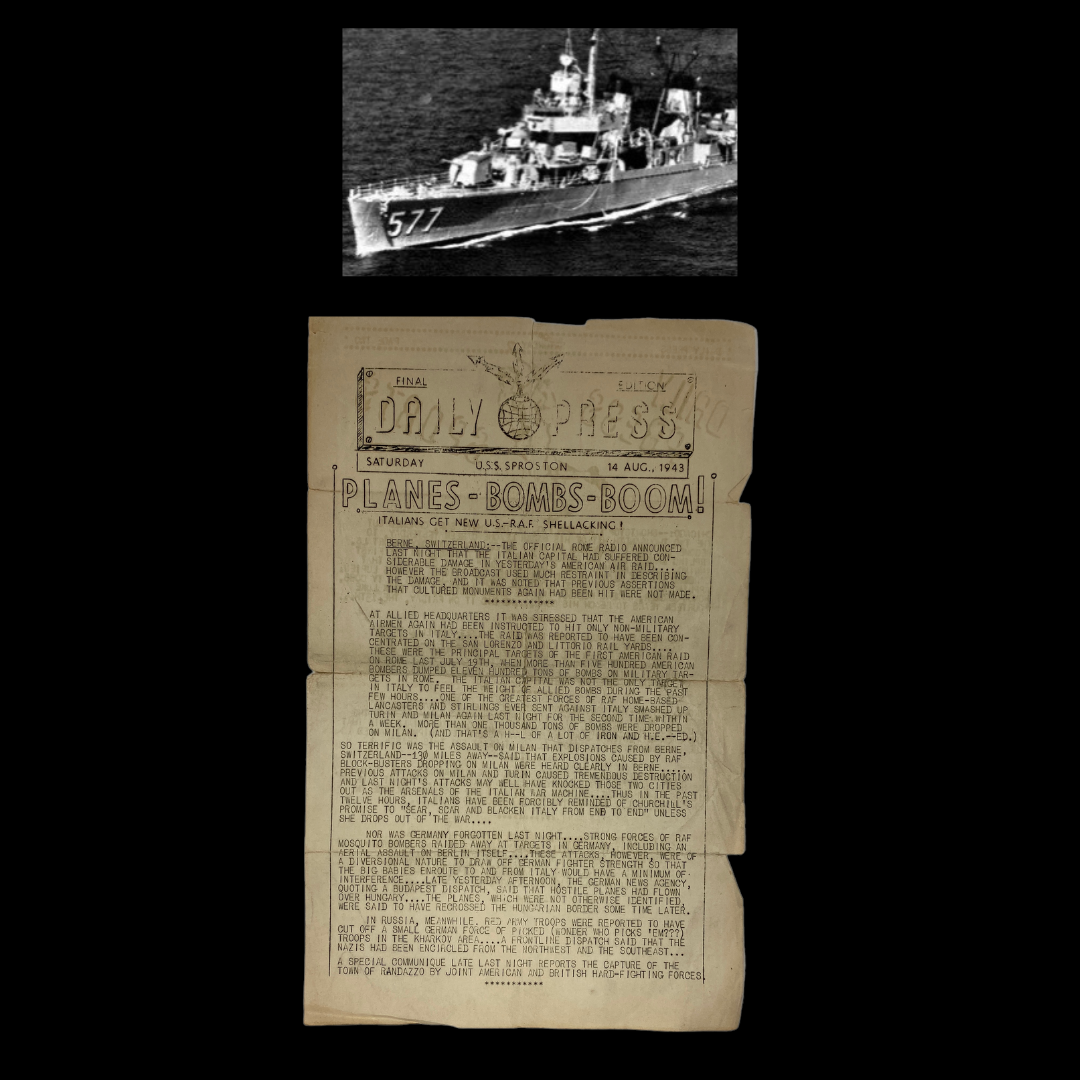
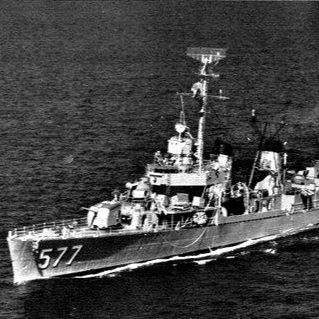
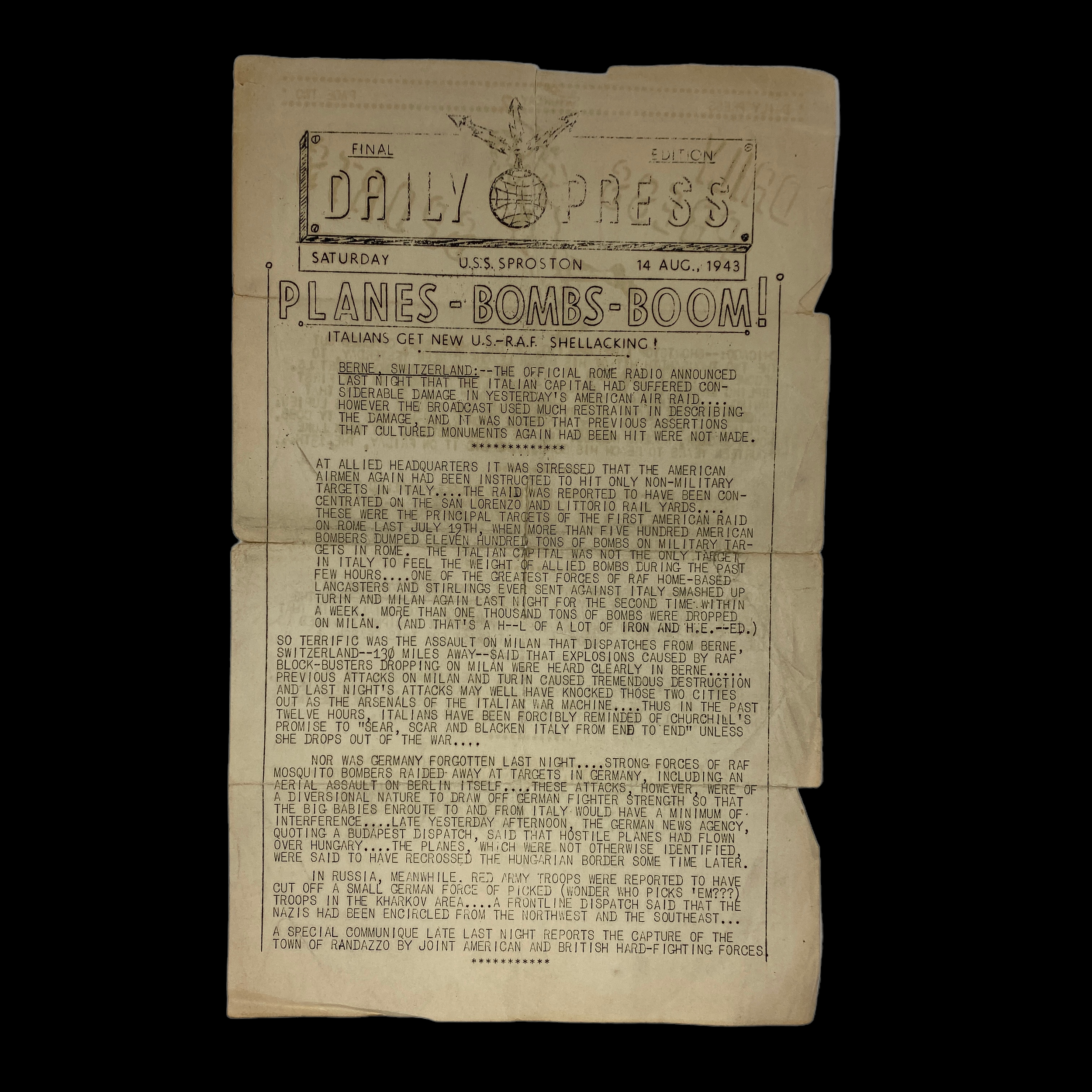
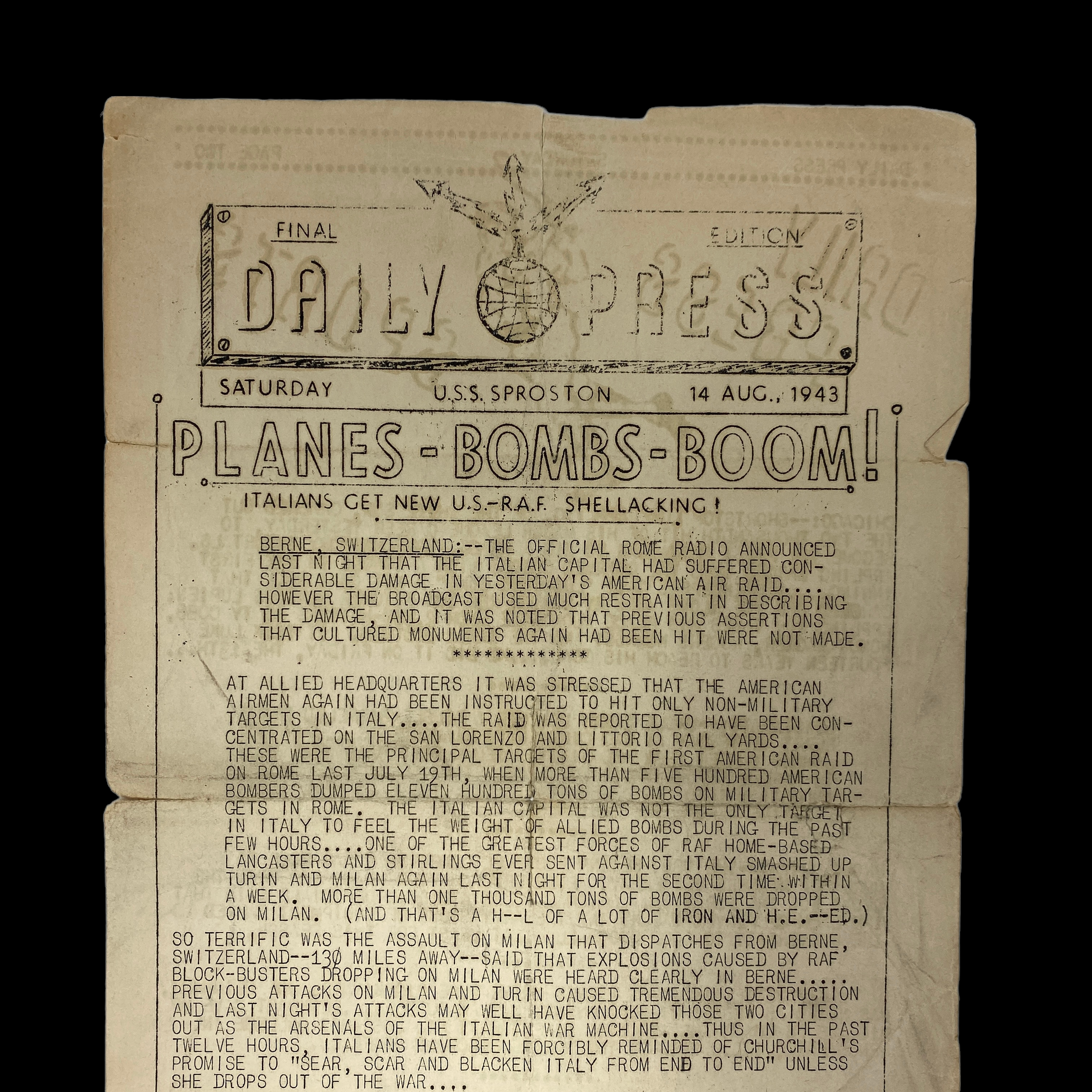

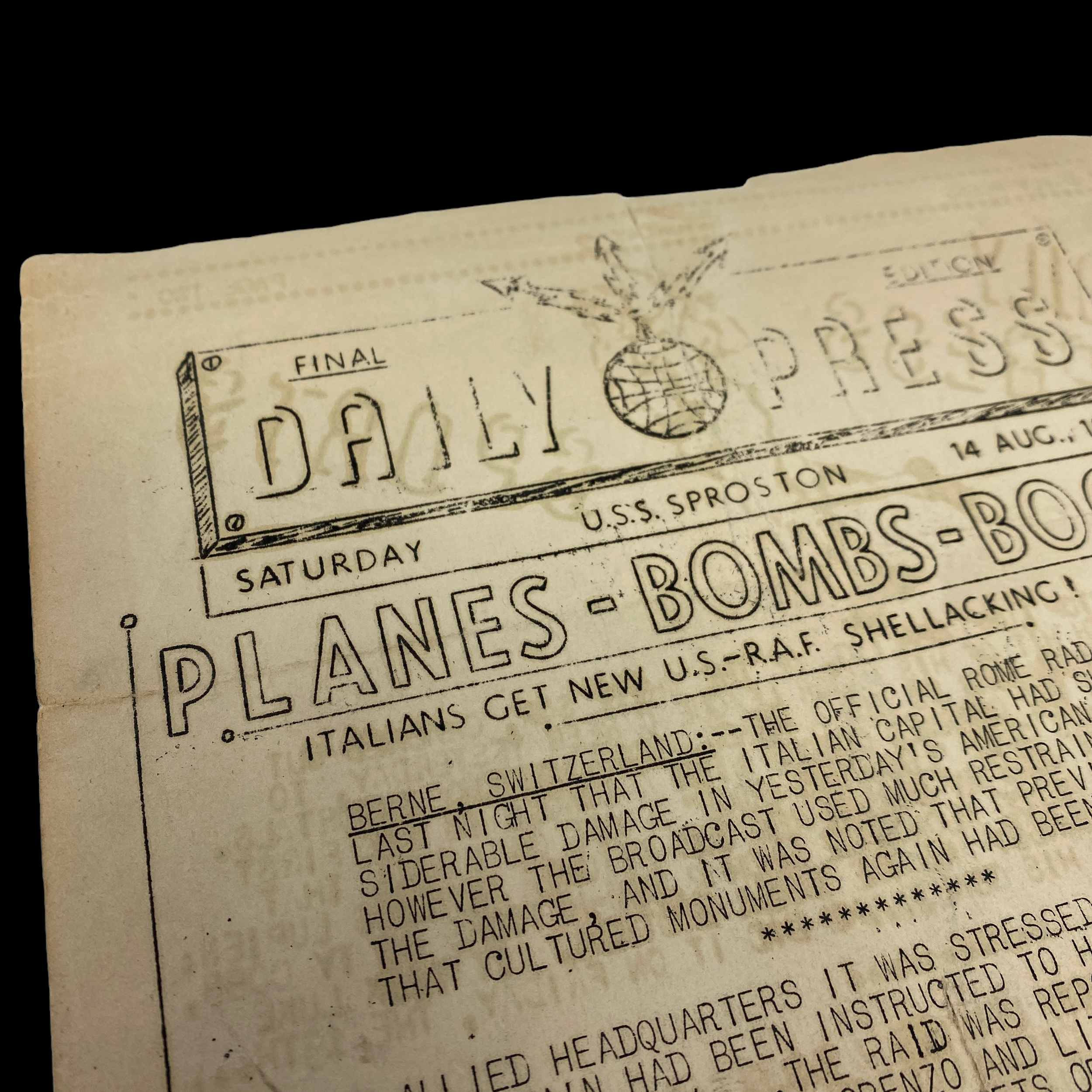
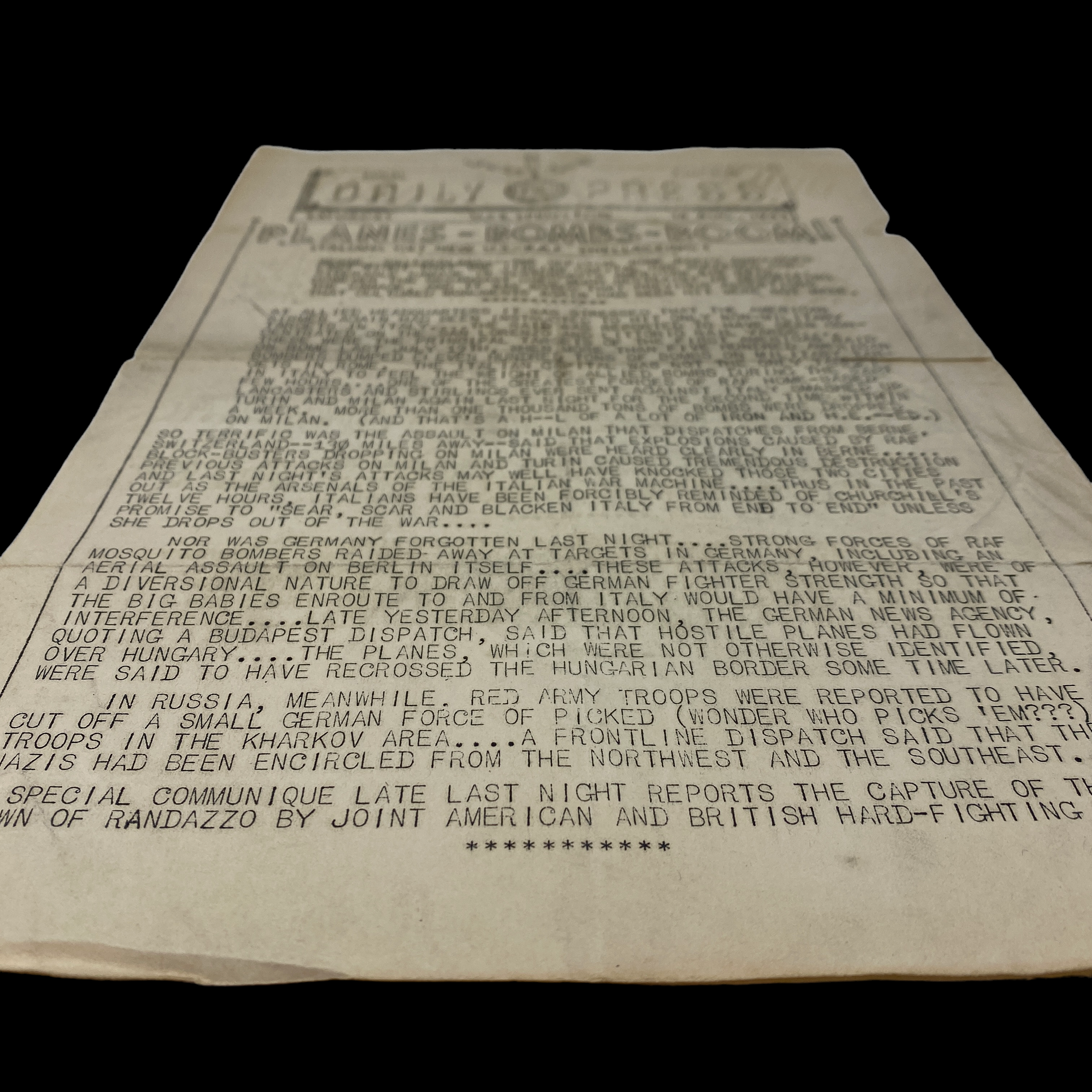
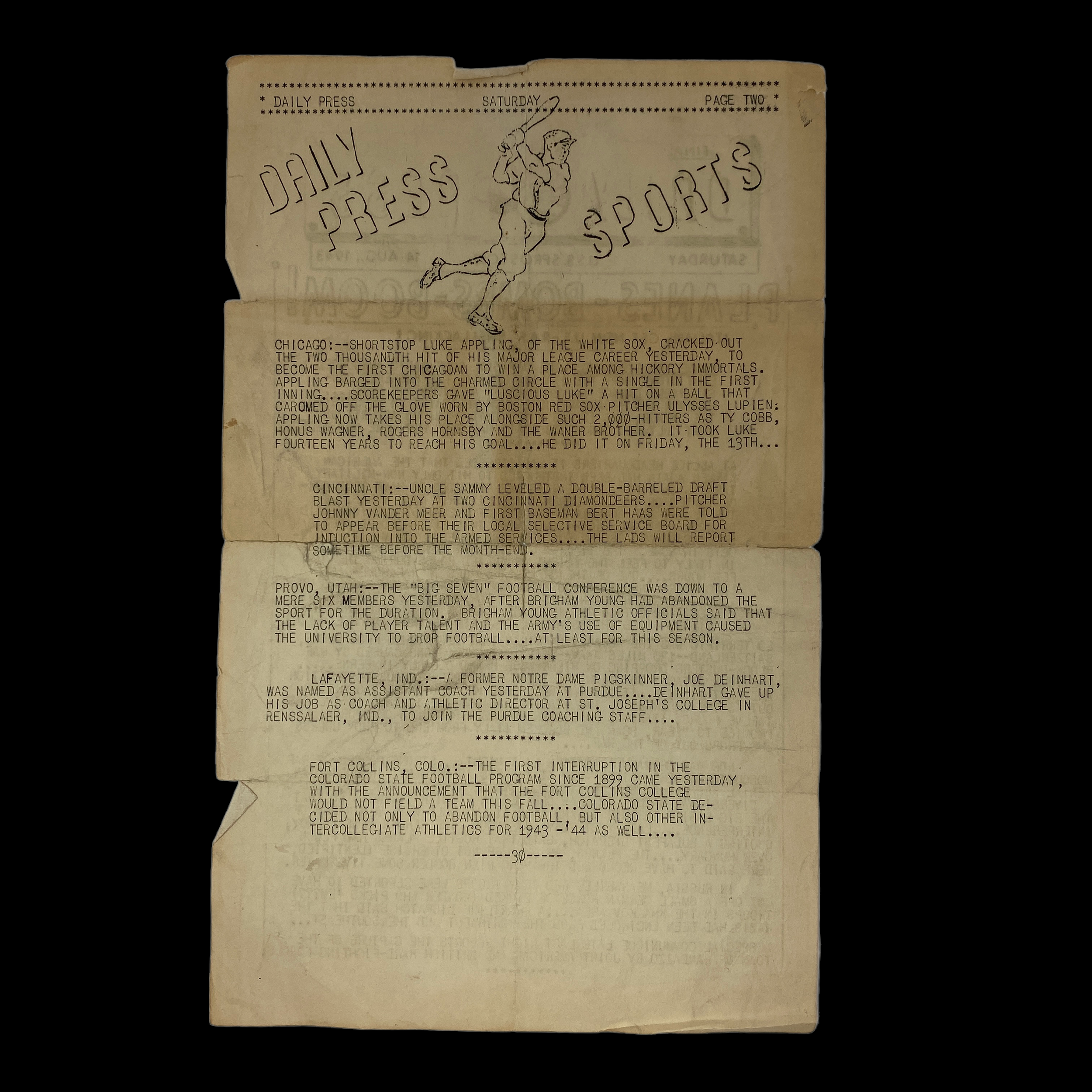
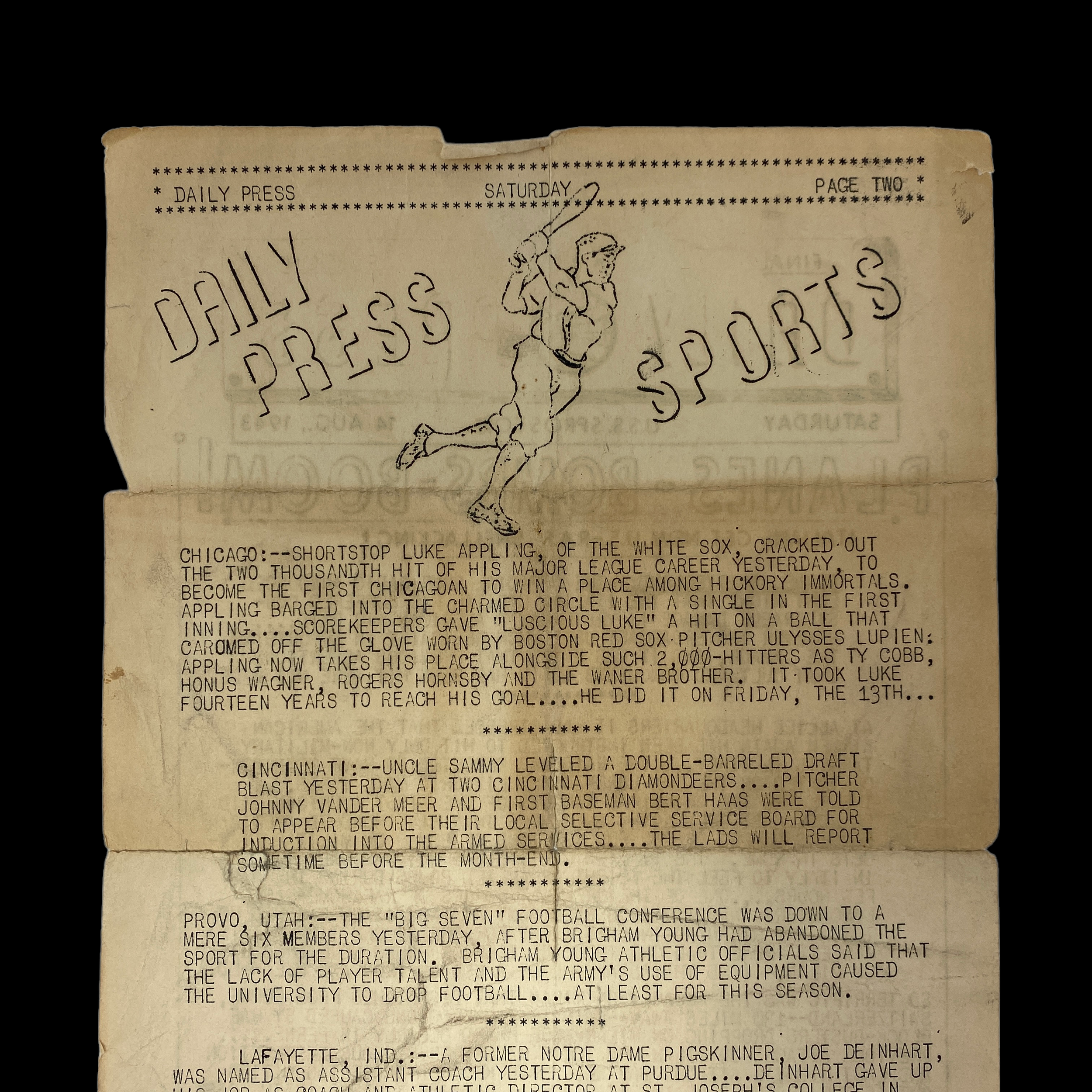
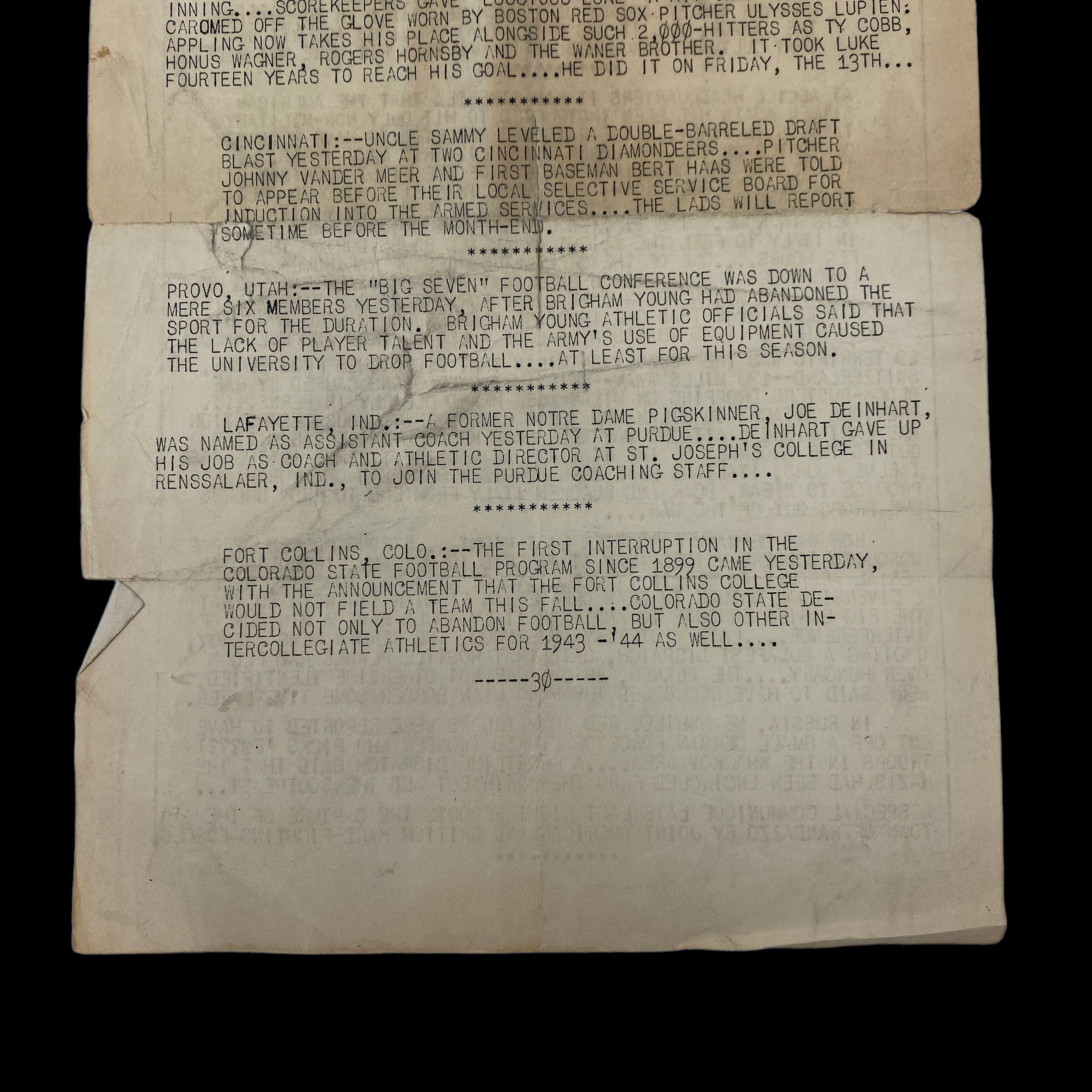
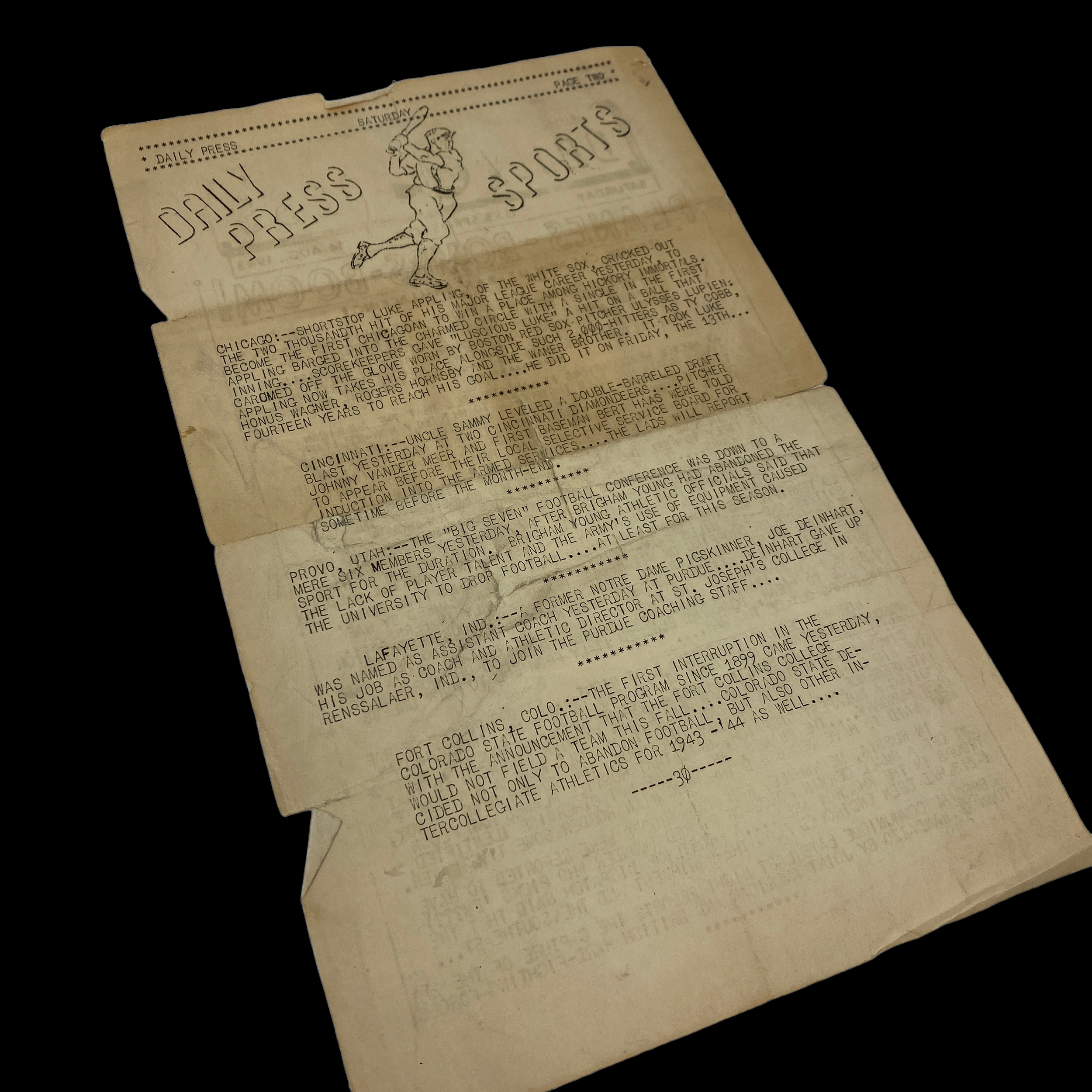
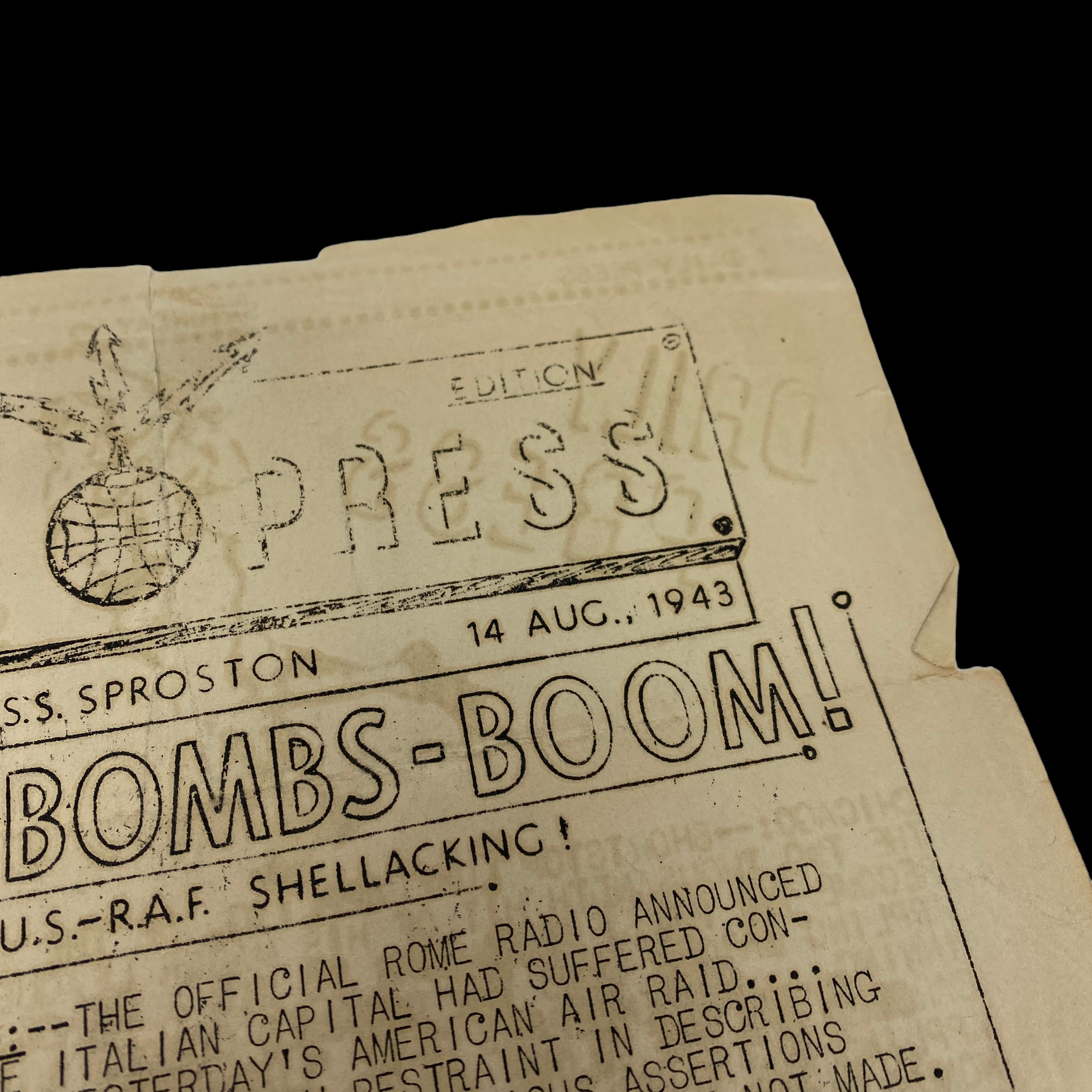
Original WWII August 1943 USS Sproston (DD-577) Pacific & European Theater War Report
Comes with hand-signed C.O.A.
For sale is a rare and historical document: a war report from the USS Sproston (DD-577), dated August 14th, 1943. This original war report was printed and made on the USS Sproston (DD-577) for her crew. This is a double-sided report and offers an incredible look into the events at that time.
Following shakedown off Cuba, the USS Sproston (DD-577), transited the Panama Canal on 4 November 1943. After a brief stop at San Francisco, California, she sailed for Pearl Harbor on 15 November and, 11 days later, headed for the Aleutian Islands. She entered Kuluk Bay, Adak, on 1 December and was assigned to Destroyer Squadron (DesRon) 49, a unit of Task Force (TF) 94.
She spent the next two months in gunnery practice and exercises. On 1 February 1944, Sproston departed Massacre Bay with TF 94 to shell targets in the Kuril Islands. On 4 February, she bombarded Kurabu Point in the Kurabu-Saki area of Paramushiro Island. One month later, the task force sailed north in the Sea of Okhotsk to strike targets in the Kurils again; but, because of extremely heavy seas and poor visibility, the mission was aborted.
Sproston spent the next three months on antisubmarine sweeps and patrols off the Aleutians. On 10 June, she was again underway for the Kuriles where she participated in the pre-dawn bombardment of Matsuwa Island. On the 26th, she shelled Kurabu Zaki airfield on the southern end of Paramushiro Island.
On 8 August, Sproston departed Sweeper Cove, Adak, for a two-week stay in San Francisco before sailing for the South Pacific war zone. En route, she made port at Pearl Harbor, Eniwetok, and Manus. In October, she was assigned to Task Unit 79.11.2 whose primary mission was to screen transports of Task Group 79.2 off Dulag, Leyte Island, during the initial campaign to liberate the Philippines.
On 25 October, with supporting fire from Hale (DD-642) and Pickens (APA-190), she shot down her first enemy plane. On 18 November, in San Pedro Bay, Sproston's gunners downed two "Zekes" of a five-plane attack force.
In late December 1944 and early January 1945, Sproston patrolled in the Lingayen area of central Luzon. On 8 January, another Japanese plane fell victim to her guns. From Lingayen, she sailed to the Zambales area to support landing operations there. At 12:48 on 29 January, she entered Subic Bay. Sproston was believed to be the first United States warship to enter Subic Bay since the Japanese occupation had begun. She continued operations in the Philippine Islands until 18 February when she was assigned to escort duty. Ordered to Guam for a week, she was in Apra Harbor from 25 February to 1 March when she sailed for Milne Bay. By 13 March, she was back in Leyte Gulf.
On 21 March, she was underway for Kerama Retto and Okinawa Gunto, Ryukyu Islands. Sproston relieved Heywood L. Edwards (DD-663) on 26 March and began picket and patrol duty. That evening, her guns hit a "Jill" which departed in flames. On 2 April, she provided call fire on Makiminato Saki, destroying two enemy pillboxes and a warehouse.
Sproston received damage to her sonar equipment and the Mk 1A main battery computer on 4 April by the near miss of a bomb which exploded 50 yards (50 m) off her port beam. There were no casualties, and the sonar equipment was quickly repaired, but the main battery could be fired only by local control. She retired to Guam for repair of her Mk 1A computer and was back on station within two weeks. Off Hagushi Beach on 12 May, she fired 16 rounds at an enemy plane which burst into flames and crashed. On 28 May Sproston and Wadsworth (DD-516) downed two planes within an hour. With supporting fire from Bradford (DD-545), she splashed another on the 29th. On 6 June, she rescued a pilot from escort carrier Gilbert Islands (CVE-107) whose plane had been shot down.
On 28 June, while she was steaming independently toward the United States for overhaul, Sproston was signalled, between Saipan and Eniwetok, by Antares (AKS-3), that she was under submarine attack and required assistance. Arriving in the vicinity of the submarine, Sproston made good sonar contact at a range of 1,000 yards (1,000 m). At 500 yards (500 m) a periscope was observed passing from starboard to port. The destroyer made an unsuccessful attempt to ram the submarine which was then identified as a fleet type. Sproston dropped a full pattern of depth charges, and a large oil slick was later observed. She made six more attacks with negative results. After all her depth charges were expended, a lookout spotted a torpedo wake approaching Sproston, 60° off her port bow. Sproston turned hard left and the torpedo passed along her port side. A periscope was then sighted off the port quarter belonging to a kaiten, a suicide submarine that had been released from the IJN fleet submarine I-36 in order to allow it to escape. A total of two kaitens were released from I-36 which were piloted by Ens Kuge Minoru and FPO1C Yanagiya Hidemasa. Once sighted the main battery commenced firing, and one salvo found its mark, causing a large secondary explosion which sank the kaiten. LC7-555, LSM-196, and LSM-197 arrived to help conduct night radar coverage of the area. The next morning, Parks (DE-165), Levy (DE-162), and Roberts (DE-749) joined the group. After a thorough search, all ships were directed to carry out their previous orders.
This war report offers a unique glimpse into the experiences of the USS Sproston and its crew during one of the most crucial periods in world history. It would make a valuable addition to any collection of historical documents or military memorabilia. Don't miss this opportunity to own a piece of history!